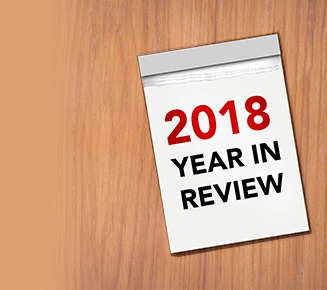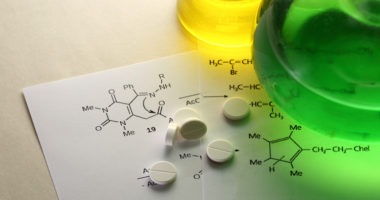2018: The Pharmaceutical Industry Year in Review
What were the top developments shaping the pharmaceutical industry overall and the pharma manufacturing value chain in 2018? Takeda’s pending $62-billion acquisition of Shire, Cambrex’s $425-million acquisition of Halo Pharmaceuticals, a record-setting number of new drug approvals by the FDA, restructuring and pricing pressure in the US generics market, and setting up supply lines in a post-Brexit world are some the key developments.
DCAT Value Chain Insights provides a Top 10 ranking of the most impactful developments from 2018.
1. Record-setting number of new molecular entity approvals (NMEs). Topping the list for 2018 is a record-setting number of NME approvals by the US Food and Drug Administration’s (FDA) Center for Drug Evaluation and Research (CDER). With almost a month still to go, FDA’s CDER has approved 55 NMEs thus far in 2018 (as of November 28, 2018), breaking the previous recent high of 53 NME approvals set in 1996 and outpacing the 46 NMEs approvals last year (2017). This year’s record-number of approvals continues an upward trajectory for NME approvals (with the exception of 2016) of NME approvals over the last several years. In 2014, FDA’s CDER approved 41 NMEs in 2014, 45 NMEs in 2015, 46 NMEs in 2017, and the 55 NMEs thus far in 2018 (in 2016 only 22 NMEs were approved). Though numbers alone do not tell the story of the composition of those NME approvals, the uptick in NME approvals is an important development for the industry.
2. Takeda’s pending $62-billion acquisition of Shire. Takeda Pharmaceutical’s pending $62-billion acquisition of Shire is one of the mega deals thus far in 2018. Takeda first disclosed an acquisition proposal for Shire in late March 2018, which was rejected by Shire, and subsequently made several revised proposals. The companies finally came to terms in May with the approval of the mega deal by both companies’ boards of directors. The deal has received approval from US and European regulatory authorities (conditioned on some product divestments required by the European Commission) and Takeda shareholders (88% voted in favor of the deal in vote on December 4, 2018). The acquisition remains subject to approval by Shire shareholders at meetings expected to be held on December 5, and to the sanctioning of the Shire scheme of arrangement by a hearing of the Jersey Court (Jersey is a UK Crown dependency in in which Shire is registered) that is expected to be held on January 3, 2019. Subject to receipt of the necessary Shire shareholder approvals and the sanction of the scheme of arrangement by the Jersey Court, it is expected that completion of the acquisition will take place on January 8, 2019.
The acquisition of Shire would strengthen Takeda’s position in markets outside of Japan, provide it with a specialist in rare-diseases and plasma-derived therapeutics, and complement its positions in gastroenterology and neuroscience while keeping oncology as a key therapeutic focus for Takeda, a position strengthened through Takeda’s $5.1-billion acquisition of Ariad Pharmaceuticals in 2017.
The proposed acquisition of Shire by Takeda comes two years after Shire’s $32-billion acquisition of Baxalta, the biopharmaceutical company spun off from Baxter Healthcare. In 2017, Shire recorded total revenues of $15.2 billion, which included product sales of $14.4 billion ($7.4 billion from Shire products and $7.0 billion from Baxalta products). Immunology is Shire’s largest therapy area with 2017 revenues of $4.370 billion and is one of five therapeutic franchises with sales in excess of $1 billion. Hematology ($3.786 billion), neuroscience ($2.664 billion), internal medicine ($1.670 billion), and genetic diseases ($1.438 billion) are the others.
Takeda is also gaining geographic diversification with a proposed acquisition of Shire. In 2017, 64% of Shire’s 2017 revenues of $15.2 billion were from the US. Takeda had 34% of its 2017 revenues from Japan, 34% from the US, 17% from Europe and Canada, and 16% from emerging markets. A combined Shire/Takeda on a pro forma revenue basis would have 48% of its revenues from the US, 33% from international markets, and 19% from Japan.
3. Bayer’s $63-billion acquisition of Monsanto. Bayer’s $63-billion acquisition of Monsanto, an agrochemical and seed company, in June 2018 is not a pharmaceutical merger but makes our Top 10 listing given the size of the deal and the implications for Bayer’s pharmaceutical business. The deal was the largest in Bayer’s history and ended a two-year effort to acquire the company. The move fortified Bayer’s strategy of being a pure-play life-sciences company with a focus on pharmaceuticals, crop protection and consumer healthcare. The deal was significant in that it places a huge investment into Bayer’s crop-protection business, not its pharmaceuticals business, which was the largest revenue piece for Bayer in 2017. It is also a test for Werner Baumann, who became chairman of the board of management of Bayer AG in May 2016 and who continued the strategic decision to make life sciences the focus of Bayer.
Following the acquisition and taking into account certain divestments required of Bayer to complete the regulatory approval of the deal, Bayer’s health and agriculture businesses will have total pro forma sales of around EUR 45 billion ($53 billion), including combined sales of the crop-science business of around EUR 20 billion ($23 billion). With the acquisition of Monsanto, Bayer’s crop-sciences business will be the largest piece of Bayer by sales, surpassing its pharmaceutical business, which accounted for nearly 50% of the company’s sales in 2017. In 2017, Bayer had total sales of EUR 35.015 billion ($41.180 billion) with pharmaceuticals accounting for EUR 16.847 billion ($19.842 billion) or 48% of sales. Sales of the crop-science business were EUR 9.577 billion ($11.250 billion), and sales of its consumer-healthcare business were EUR 5.862 billion ($6.887 billion). Sales of its animal-health business were EUR 1.571 billion ($1.848 billion).
Last month (November 2018), Bayer announced staff reductions of approximately 10% of its global workforce, or 12,000 employees, across all of its business by the end of 2021. Approximately half of these cuts are in corporate functions, supporting functions, and business services, one-third in its crop-protection business, and about 10% in its pharmaceutical business. Bayer says its planned efficiency and structural measures are expected to enhance competitiveness and generate annual contributions of EUR 2.6 billion ($2.9 billion) as of 2022, which include expected synergies from its $63-billion acquisition of Monsanto. The restructuring also involves plans to divest its animal-health business and sell several consumer health brands.
4. Falling fortunes for the US generics market. Always a cost-competitive market, the generics market, particularly the US market, is posing margin and pricing pressures on generic-drug companies. Novartis’ Sandoz, Teva, Mylan, Perrigo, and Mylan were among the companies reporting lower revenues in their generics businesses in 2018, principally due to performance in the US market, and revamped their strategies to respond.
In September (2018), Novartis agreed to sell select portions of its Sandoz US portfolio, specifically the Sandoz US dermatology business and generic US oral solids portfolio, to Aurobindo Pharma USA for $1 billion, consisting of $900 million in cash plus $100 million of potential earn-outs. Novartis says the transaction supports the Sandoz strategy of focusing on complex generics, value-added medicines, and biosimilars in order to achieve sustainable and profitable growth in the US over the long-term. The deal is expected to close in 2019 following satisfaction of customary closing conditions.
In August (2018), Mylan formed a strategic review committee to evaluate alternatives for its businesses following weak second-quarter performance in its North American segment. Mylan says the profile of the company has changed over the last several years by shifting its core from a US-centric operation to an international presence.
Price erosion and increased product competition in the US generics market was a key factor behind a two-year restructuring plan, announced by Teva in December 2017, which began implementation in 2018, which included a reduction of 25% of its workforce or 14,000 positions globally, closures or divestments of research and development facilities and offices, and a $3-billion reduction in its annual costs. This news followed an announcement by Teva in November 2017 of a new organizational structure and executive management team, which followed the appointment of a new president and chief executive officer (CEO), Kåre Schultz, who took over on November 1, 2017. Teva had earlier announced a restructuring plan in August 2017, which included the closing or divestment of 15 manufacturing plants.
In August 2018, Perrigo announced plans to separate the company’s prescription (Rx) pharmaceuticals business, which consists primarily of generics, following a strategic portfolio review. The move followed continuing weak performance in the company’s Rx business, which accounted for approximately 20% of the company’s net sales in 2017. A separation of its Rx business would leave the company’s primary focus on consumer healthcare or over-the-counter (OTC) products. Perrigo’s prescription pharmaceutical business develops, manufactures, and markets a portfolio of generic prescription drugs primarily in the US. The company said it consider all value-enhancing options, including a possible tax-efficient separation to shareholders, a sale or merger.
5. Slowing pharmaceutical industry growth in the US. Spending on all US medicines increased only 0.6% in 2017 to $324 billion on a net basis due to greater generic volume, larger manufacturer discounts, and increasing coupon use, according to an analysis by the IQVIA Institute for Human Data Science. US medicine spending is projected to grow 2% to 5% after off-invoice discounts and rebates through 2022 to an estimated $380 billion to $410 billion on a net basis, according to the IQVIA analysis. This growth, driven primarily by the large number of new medicines, many of which will be specialty and orphan drugs, will be offset by the impact of losses of brand exclusivity.
Spending growth slowed in 2017 due to lower price increases for protected branded products, price declines for generics, and less growth from new products despite a large increase in the number of new product launches. In 2017, spending grew 0.6% net of off-invoice discounts and rebates as invoice-level growth slowed to 1.4%, according to the IQVIA analysis. Overall, spending reached a total of $453 billion on a gross invoice basis but $324 billion on a net basis. Discounts, rebates, and other price concessions on branded medicines reduced absolute invoice spending by an estimated 28% to $324.4 billion. When adjusted for off-invoice discounts and rebates, population and economic growth, real net-per-capita drug spend declined by 2.2% in 2017 and had a compound annual growth rate (CAGR) of only 1.0% during the past decade. Retail prescription drugs accounted for $212 billion in net spending in 2017, reflecting a 2.1% decline from 2016.
IQVIA projects a modest overall increase of 2% to 5% in US net spending during the next five years through 2022, with 1% to 4% percent growth in retail and mail-order prescription drugs. That is expected to drive overall medicine spending in the US to an estimated range of $550 billion to $600 billion by 2022, or $380 billion to $410 billion on a net basis.
6. Potential reform in active pharmaceutical ingredient patent rules for the European Union. Innovator and generic-drug companies are squaring off on a proposal by the European Commission (EC) for an export manufacturing waiver for supplementary protection certificates (SPCs) in the European Union (EU). SPCs extend protection of patented medicines in the EU by up to five years to compensate for the time lost in obtaining regulatory approval of the medicine. During this period, European manufacturers of generic-drugs and biosimilars cannot produce their medicines in the EU. In 2018, the EC proposed an export manufacturing waiver to SPCs.
The SPC regulation, first enacted in 1992, according to some, has had the unintended effect of putting the European generic-drug, biosimilar, and active pharmaceutical ingredient (APIs) manufacturing industries at a competitive disadvantage vis-à-vis manufacturers producing in non-EU countries where no similar patent/SPC protection exists. During the time of SPC protection, EU-based manufacturers of generic drugs or biosimilars cannot produce generic or biosimilar versions of these medicines for sale in the EU, export these medicines to countries where the SPC does not apply, or produce and stockpile medicines for the EU market in advance of the day of SPC expiry. Critics of SPCs say that European manufacturers are currently required to outsource production outside Europe to supply countries without SPCs or where SPCs expire earlier than in Europe in order to provide competition as soon as SPCs expire in Europe.
To address that issue as part of its Single Market Strategy, the EC proposed in May 2018 a regulation to address several key issues with SPCs. First, the EC wanted to address the loss of export markets, including new business opportunities, and a lack of timely (meaning Day-1) entry into EU member states following expiry of the SPC for EU-based manufacturers of generics and biosimilars. Second, the EC also wanted to address what it called the “fragmented implementation” of the SPC regime in EU member states and of the Bolar patent exemption. The Bolar patent exemption speeds entry of generic medicines into the market by allowing early preparatory development on generics to obtain pre-market regulatory approval even when the SPC of the reference medicine is still in force.
The EC’s proposal calls for a manufacturing waiver during the term of an SPC that would take the form of an “exception,” or in other words, a restriction, to the protection conferred to the SPC. It would allow generic and biosimilar developers to manufacture, in an EU member state during the term of an SPC, for the exclusive purpose of exporting their products to non-EU markets where patent or SPC protection has expired or never existed.
7. Cambrex’s $425-million acquisition of Halo Pharmaceuticals and pending $252-million acquisition of Avista Pharma Solutions. Among contract service providers and suppliers, Cambrex has been active in building its capabilities outside of its core position in services for development and manufacturing of small-molecule APIs and intermediates to include formulation development and manufacturing services for drug products to become an end-to-end provider. In September (2018), it completed its acquisition of Halo Pharma, a Whippany, New Jersey-headquartered contract development and manufacturing organization, for approximately $425 million. The addition of Halo added formulation development and finished-dosage manufacturing capabilities to Cambrex’s existing global API manufacturing network.
Last month (November 2018), Cambrex announced that it will acquire Avista Pharma Solutions, a Durham, North Carolina-headquartered contract testing, development, and manufacturing organization, for $252 million. Avista offers a suite of services ranging from API and drug-product development and cGMP manufacturing to stand-alone analytical, microbiology testing and solid-state sciences. The acquisition of Avista supports Cambrex as a fully integrated small-molecule contract development and manufacturing organization across the entire drug lifecycle. Completion of the transaction is subject to customary closing conditions and is expected to occur during the fourth quarter of 2018.
8. Brexit and the pharmaceutical industry. Like other industries, the pharmaceutical industry is closely watching the resolution of the deal for the UK to exit the European Union (EU) (i.e., Brexit). After months of negotiation, last month (November 2018), the UK and EU reached an agreement on a Brexit deal, which needs to be approved by the UK Parliament, a vote that is scheduled for this month (December 2018). The deal consists of a 585-page withdrawal agreement that is legally binding that sets the terms of the UK’s separation from the EU and a 26-page statement on future relations that is not legally binding and sketches out the kind of long-term relationship the UK and EU want to have in a range of areas, including trade, defense, and security. If the UK Parliament passes the deal, the European Parliament will vote before Brexit takes effect, which is March 29, 2019. The European Council has endorsed the agreement on the withdrawal of the UK from the EU and has approved the Political Declaration setting out the framework for the future relationship between the UK and the EU.
Throughout the negotiation process, pharmaceutical industry leaders called for an orderly implementation relating to the regulation, manufacture, and supply of medicines post Brexit. In July (2018), the chief executive of The Association of the British Pharmaceutical Industry (ABPI), which represents innovator and research-based pharmaceutical companies in the UK, and leaders from seven other UK and European pharmaceutical and life-science industry bodies, wrote a joint letter to the UK and EU Brexit negotiation teams to underscore the importance of securing ongoing cooperation between the UK and EU on medicines in the wake of Brexit.
After the signing of the Brexit deal, the ABPI reinforced the importance of pharmaceutical supply post Brexit. “The terms of the deal mean that medicines will continue to reach the patients who need them when the UK leaves the EU in March,” said Mike Thompson, ABPI chief executive, in a November 25, 2018 statement. “It also includes the ‘possibility of cooperation’ between the regulators, the MHRA [the Medicines and Healthcare products Regulatory Agency, the UK pharmaceutical regulatory body] and the EMA [European Medicines Agency]. We urge politicians to move swiftly to confirm the closest cooperation in regulation and scientific research, which will maximize Europe’s ability to compete globally. Without this, the US and China will continue to attract the major share of new life sciences investment. We’re committed to working closely with our members, the Government and the EU Commission to get the right relationship for patients and for European life sciences.”
9. Celgene’s acquisitions of Juno Therapeutics and Impact Biomedicines. Celgene made two key acquisitions in 2018: a $9-billion acquisition of Juno Therapeutics and a $7-billion acquisition of Impact Biomedicines. Celgene made a big play for cell and gene therapies with its approximate $9-billion acquisition of Juno Therapeutics, a biopharmaceutical company focused on developing cellular immunotherapies for the treatment of cancer. Celgene completed the acquisition in March 2018. The Juno acquisition provides Celgene with a scientific platform and scalable manufacturing capabilities, in addition to lisocabtagene maraleucel, an investigational CD19-directed chimeric antigen receptor T-cell therapy (CAR T) currently in a clinical development program for relapsed and/or refractory diffuse large B-cell lymphoma.
Celgene made another large acquisition in 2018, by acquiring Impact Biomedicines, a San Diego, California-headquartered biopharmaceutical company, in a deal worth up to $7 billion, which includes $1.1 billion upfront and up to $5.9 billion in regulatory and sales milestones. Impact Biomedicines is focused on developing drugs to treat myeloproliferative neoplasms, a type of blood cancer, and other cancers. Impact’s late-stage pipeline is centered around fedratinib, an oral small molecule, Janus kinase (JAK) inhibitor (specifically a JAK2 kinase inhibitor), which is being developed initially for treating myelofibrosis, a blood cancer that disrupts the normal production of blood cells, and polycythemia vera, a slow-growing blood cancer. Impact was formed in 2016 after acquisition of Sanofi’s full rights for the global development and commercialization of fedratinib.
10. GlaxoSmithKline’s $13-billion acquisition for full control of its consumer healthcare joint venture with Novartis. In June 2018, GlaxoSmithKline (GSK) agreed to acquire Novartis’ 36.5% stake in the companies’ consumer healthcare joint venture for $13 billion, which would grant GSK full ownership of the business. The joint venture was formed in 2015 as part of Novartis’ portfolio transformation, which comprised a three-part transaction with GSK, including the combination of Novartis’ over-the-counter business with the GSK consumer healthcare business into the existing joint venture. Novartis also acquired certain oncology products and pipeline compounds from GSK and divested its non-influenza vaccines business to GSK. GSK had an option to acquire Novartis’ share beginning in March 2018 through March 2035. GSK said in April 2018 that this put option, in both size and possible timing, created inherent uncertainty for its capital planning and that its decision to buy out Novartis’ stake would remove this uncertainty and improve the company’s ability to plan allocation of capital to its other priorities.







